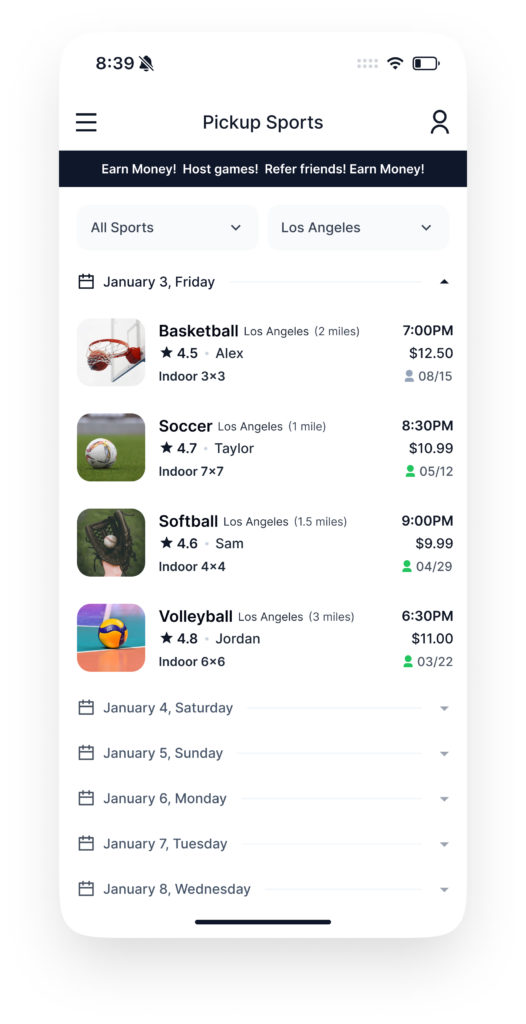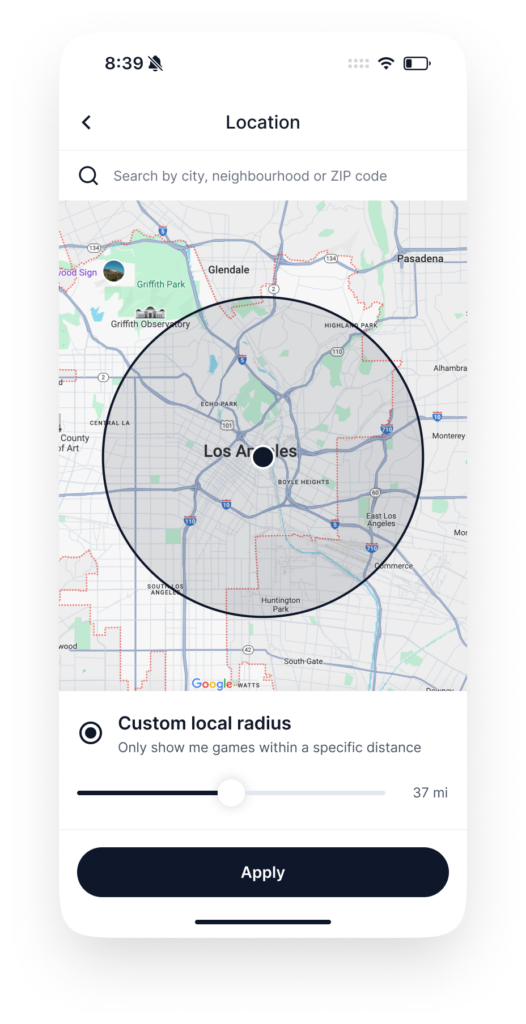How Much Does It Cost to Build a Pickleball Court? A Comprehensive Guide
Pickleball, a sport that combines elements of tennis, badminton, and table tennis, has been rapidly gaining popularity across the United States and around the world. With its engaging gameplay and social atmosphere, many people are considering the idea of building their own pickleball courts—whether for personal use or to accommodate a community of players. If you’ve been searching for “How much does it cost for a pickleball court?”, you’re in the right place! In this guide, we’ll break down the costs involved, the factors that influence those costs, and how the Pickup Sports App can help you connect with local leagues and players once your court is ready.
Understanding the Costs of Building a Pickleball Court
When contemplating the cost of constructing a pickleball court, there are several factors to consider:
1. Location and Land Preparation
The first step in building a pickleball court is selecting a suitable location. Whether you have a spacious backyard, a commercial property, or a local park in mind, the cost can vary significantly:
Residential Location: If you’re building on your property, expect to pay between $1,000 to $3,000 for land preparation, which may involve clearing debris, leveling the surface, and adding gravel.
Commercial Location: If you are renting land or constructing a court in a public area, costs can go up significantly due to permitting and other fees.
2. Court Dimensions and Materials
The official dimensions for a standard pickleball court are 20 feet wide and 44 feet long for doubles play. Here are the material costs to consider:
Surface Materials: The choice of surface material can significantly impact your costs. Options include:
Asphalt: Generally cheaper, costing around $2 to $5 per square foot.
Concrete: More durable but pricier, with costs ranging from $5 to $15 per square foot.
Synthetic Surfaces: These premium options often range from $10 to $30 per square foot, depending on quality.
For a full-sized court, expect surface costs to fall within the range of $6,000 to $15,000 depending on your choice of materials.
3. Netting and Fencing
A crucial aspect of your court’s setup is ensuring safety and playability.
Fencing: A standard perimeter fence, which is usually 10 feet high, costs around $2,000 to $5,000 depending on the material (chain link or vinyl) and dimensions.
Net Systems: A professional net system can cost about $250 to $500.
4. Lighting
If you plan to play during twilight or nighttime, installing adequate lighting is essential.
Lighting Fixtures: While basic lights may cost $100 to $300, complete systems for commercial use could exceed $5,000. Expect to spend $2,000 to $3,000 for residential lighting.
5. Other Setup Costs
Don’t forget to account for:
Resurfacing and Maintenance: Plan for ongoing maintenance costs that could total $300 to $500 annually.
Seating areas: If you wish to have benches or spectator areas, that could add an additional $1,000 to $3,000.
Total Estimated Cost
Overall, depending on various factors, the total cost to build a pickleball court can range from $20,000 to $50,000 when accounting for land preparation, materials, lighting, and accessories.
Can You Build a Pickleball Court for Less?
If you’re passionate about pickleball but on a budget, there are ways to save costs:
DIY Options: If you have construction skills, you can do some of the labor yourself or enlist friends to help reduce costs.
Community Courts: Consider collaborating with local parks or recreation departments to share costs, helping facilitate community tournaments and interests.
Temporary Courts: Look into portable court solutions to set up temporary courts at parks or large backyards, generally costing less than permanent structures while still being usable.
How the Pickup Sports App Can Help You Connect
Now that you have an idea of the costs and considerations involved in building a pickleball court, how do you connect with the community and find players to join you? That’s where the Pickup Sports App comes in!
What is the Pickup Sports App?
The Pickup Sports App is a perfect solution for anyone looking to engage in adult sports leagues in their city. Designed to connect players, coaches, and league organizers, this app allows you to discover local pickup games, join leagues, and even schedule games at your new court once it’s ready.
Key Features of the Pickup Sports App
1. Local Connections: Instantly connect with fellow pickleball enthusiasts in your area. The app lets you post your games or join other players’ games.
2. League Organization: Easily facilitate and organize leagues. If you’re running or sponsoring a league at your new court, you can use the Pick-Up Sports App to manage schedules, scores, and communications with team members.
3. Event Notifications: Get real-time updates about local pickleball events, tournaments, and leagues going on around you.
4. User-friendly Interface: The app is designed for users of all ages and tech-savviness levels, smoothing out the process of finding games or forming leagues.
5. Community Building: This app not only enhances individual play but also promotes a sense of community, which is crucial for a social sport like pickleball.
6. Find Local Facilities: If you decide not to build at home or while waiting for your court to be built, you can find nearby facilities and community centers through the app, expanding your pickleball network quickly.
The Social Aspect of Pickleball
Ultimately, pickleball is more than just a sport; it’s an engaging social activity. By leveraging the Pickup Sports App, you can foster connections and create a vibrant community that will thrive at your new court. This builds camaraderie, friendly rivalry, and even lifelong friendships.
Moreover, as you gather more players through the app, your court can become a venue for tournaments, events, and classes, further enhancing your investment into the sport and community.
Conclusion
Calculating the costs of building a pickleball court involves consideration of land preparation, surface materials, fencing, lighting, and more, amounting to a range of $20,000 to $50,000 or sometimes more. However, with careful planning, budgeting, and community collaboration, you can lower these costs and create an amazing space for play.
By integrating the Pickup Sports App into your pickleball journey, you ensure that your new court doesn’t just become a solitary space but rather a vibrant hub for social interaction and community engagement. Download the Pickup Sports App today, connect with your local pickleball scene, and take your enjoyment of this fantastic sport to the next level!
—
Now that you have a detailed understanding of how much it costs to build a pickleball court, you can start planning and exploring all the wonderful ways to engage with the growing pickleball community. Whether you’re playing for fun, competition, or community connection, pickleball is a sport that unites and excites—and we’re just getting started!





